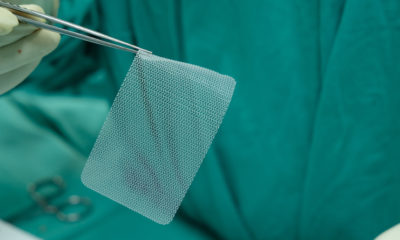Scientists at Johns Hopkins University have found that the oils from some herbs may be effective for the treatment of Lyme Disease, especially in cases where the patient continues to have symptoms after receiving antibiotic treatment.
Lyme Disease is On the Rise
According to the U.S. Centers for Disease Control and Prevention, tick-borne diseases are going up across the country from 48,610 cases to 59,349 in 2017. There is no known cause for the increase, but the number of cases continues to go up. To make matters worse, researchers said cases of tick-borne illness are not always diagnosed, and there could be as many as 300,000 new cases of Lyme disease each year.
For most Lyme disease patients, treatment with antibiotics can clear the infection up rather quickly. But some patients may not respond to traditional therapies and continue to suffer the symptoms of Lyme disease for the long-term, including joint pain and serious fatigue.
Patients who suffer this persistent form of Lyme disease, also called post-treatment Lyme disease, could be suffering a new disorder resulting from the initial Lyme infection. The bacteria specific to Lyme disease, Borrelia burgdorferi, can enter a phase of stationary growth, and persister cells can be resistant to treatment with antibiotics. But research is showing that oils from herbs like garlic do better than antibiotics at attacking those specific cells.
Study Results Show Marked Improvements
Tests conducted in lab dishes involved the essential oils of 35 plants or their fruit. Tens of the essential oils proved to be the strongest at killing persister cells including oils from cinnamon bark, myrrh trees, garlic cloves, allspice berries, thyme leaves, and cumin seeds. Senior study author Dr. Ying Zhang said that some essential oils performed even better at killing persister cells than the traditional therapies.
What is Lyme Disease
Lyme disease is an infection caused by B. burgdorferi bacteria. The bacteria are transmitted to humans from infected deer ticks or black-legged ticks. Symptoms of an infection can present within days to years after you are bitten and may include:
- Swollen lymph nodes
- Rash
- Muscle and joint pain
- Headache
- Fever
- Fatigue
- Chills
If you do not seek treatment for the bacterial infection, your symptoms may progress to include:
- Arthritis with pain and swelling, especially the knees
- Brain inflammation
- Drooping of the face (one or both sides)
- Heart palpitations
- Irregular heartbeat
- Rash on other parts of the body
- Severe headache
- Shooting numbness or pain in the hands or feet
- Spinal cord inflammation
- Stiff neck
Your odds of getting Lyme disease from a black-legged tick or a deer tick depends on how long the tick remained attached to your body. Ticks generally have to be attached to you for between 36 and 48-hours or so to transmit the bacteria. If you perform a nightly-tick check and remove any you find, you are far less likely to be infected.
Testing Planned for Animals and Humans
Dr. Ying Zhang is credited with finding that the medicines used to treat resistant bacterial infections like MRSA work better in combination than traditional antibiotic therapies when treating Lyme infections. He is planning on testing the safety and efficacy of essential oils in post-treatment Lyme infections in animals and then in humans.























